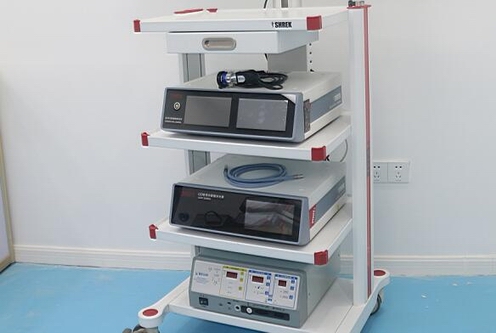Medical Endoscope Camera Module: A Key Component for Endoscopy and Minimally Invasive Surgery
Medical endoscope camera modules are an essential component of modern endoscopy and minimally invasive surgical procedures. These tiny cameras allow medical professionals to visualize and diagnose conditions inside the body without the need for invasive surgery. This essay will explore the technology behind medical endoscope camera modules and their critical role in modern medical procedures.

An endoscope camera module consists of several components, including an image sensor, lens system, control electronics, and video processing algorithms. The image sensor captures high-quality images and sends them to the control electronics for processing and transmission to a monitor or recording device. The lens system is designed to provide clear, detailed images of the internal organs, tissues, or cavities being examined.
One of the most critical features of a medical endoscope camera module is its size. These modules are incredibly small, often measuring only a few millimeters in diameter, allowing them to be inserted into the body through a small incision or natural opening, such as the mouth or anus. This minimally invasive approach reduces patient discomfort and allows for faster recovery times.
The resolution of medical endoscope camera modules has improved significantly over the years, with many modules now capable of capturing high-definition images. This enhanced resolution has allowed medical professionals to better visualize the internal structures of the body, leading to more accurate diagnoses and treatments.
Medical endoscope camera modules are used in a variety of medical procedures, including gastroenterology, urology, gynecology, and orthopedics. They are used to diagnose and treat a wide range of conditions, including cancer, gastrointestinal disorders, urinary tract infections, and joint injuries.
The use of medical endoscope camera modules has transformed the field of medicine, making many procedures less invasive, less painful, and less time-consuming. However, the cost of these modules remains a significant barrier to their widespread adoption. As with many medical technologies, the high cost of these modules can limit their availability to medical facilities, particularly in low-income countries or rural areas where access to medical technology is limited.
In conclusion, medical endoscope camera modules are a key component of modern endoscopy and minimally invasive surgical procedures. Their small size, high resolution, and advanced imaging capabilities have revolutionized the way many medical conditions are diagnosed and treated. While their cost remains a significant barrier to their widespread adoption, continued advancements in technology and increased competition among manufacturers may result in lower prices, making these critical tools more accessible to patients and medical professionals.



Leave a message